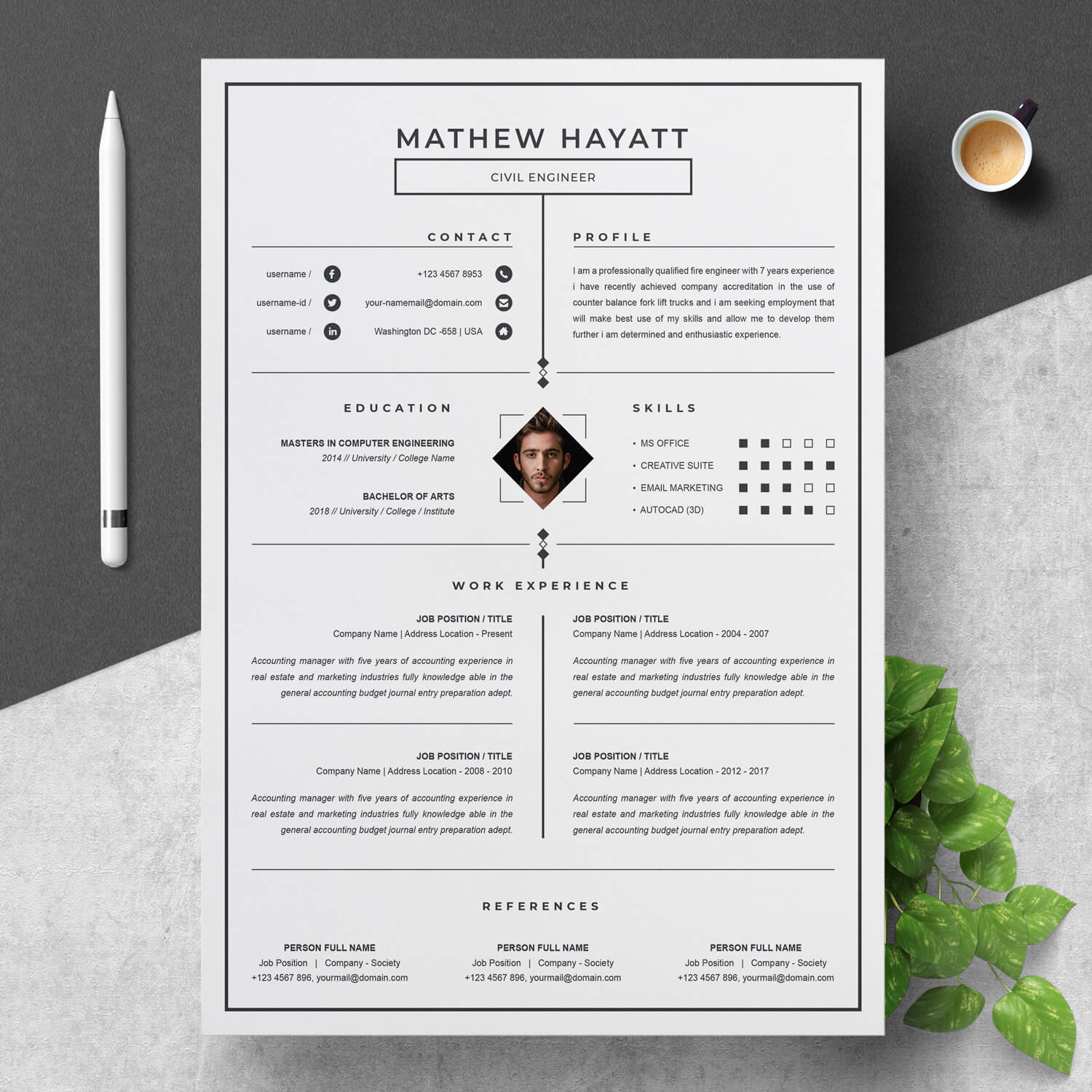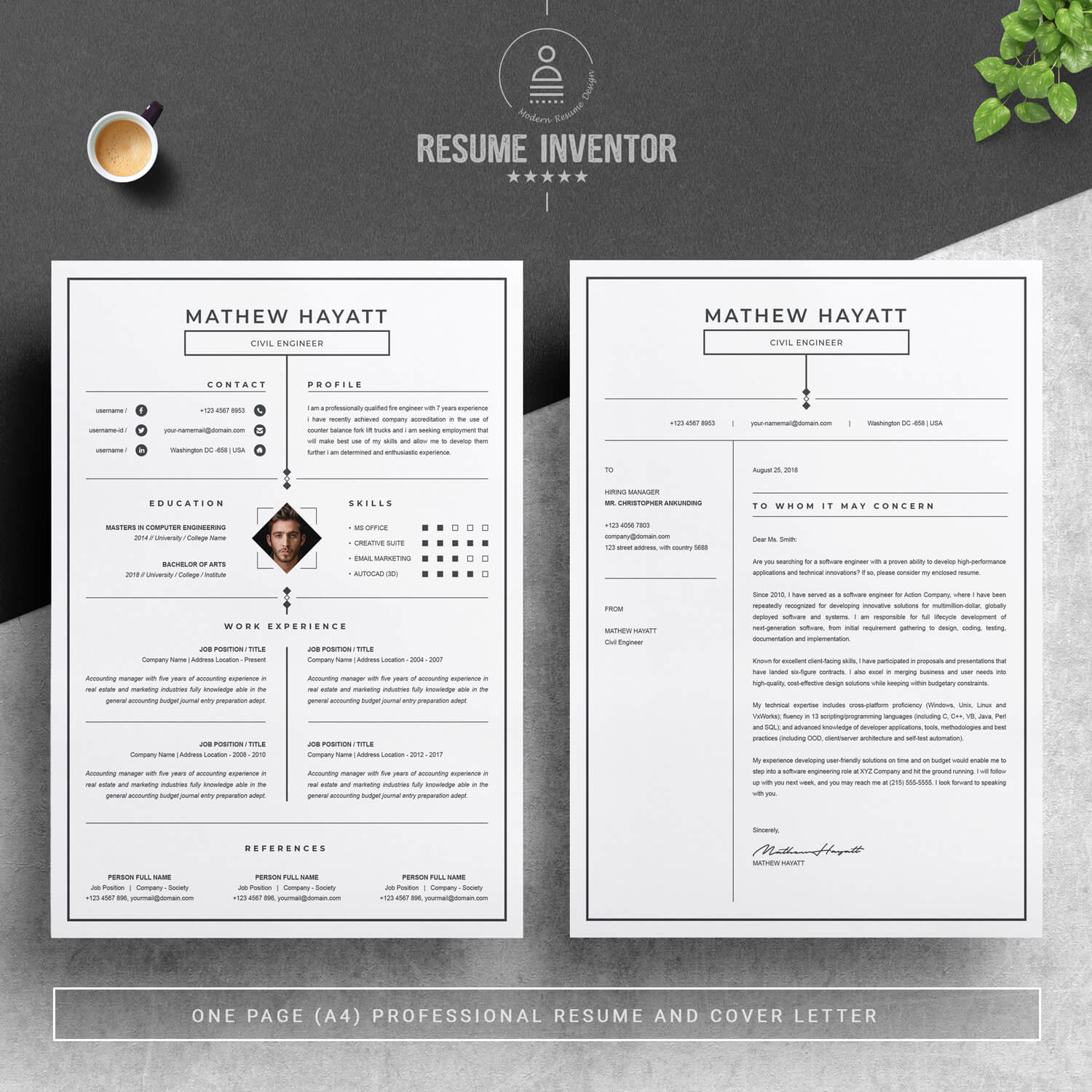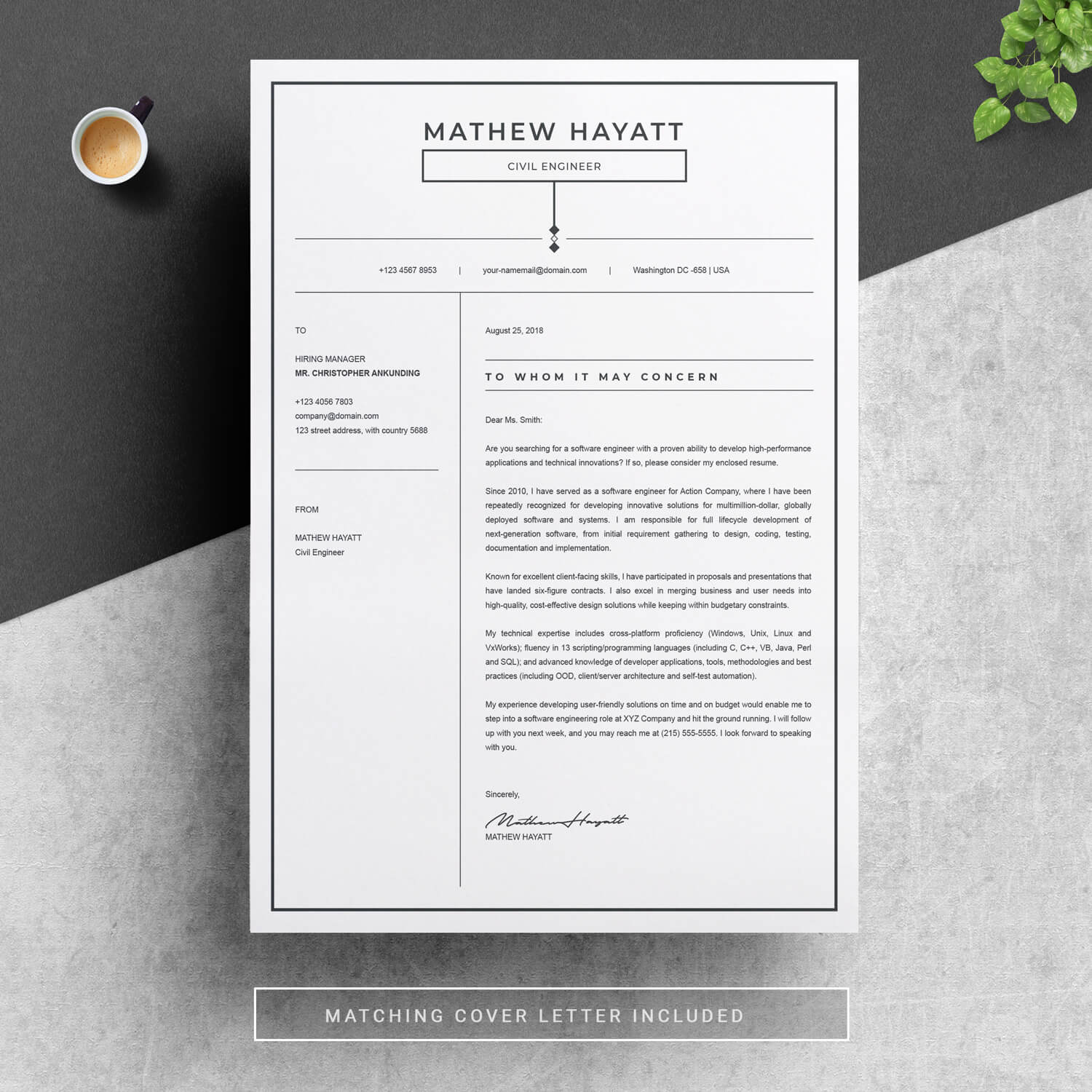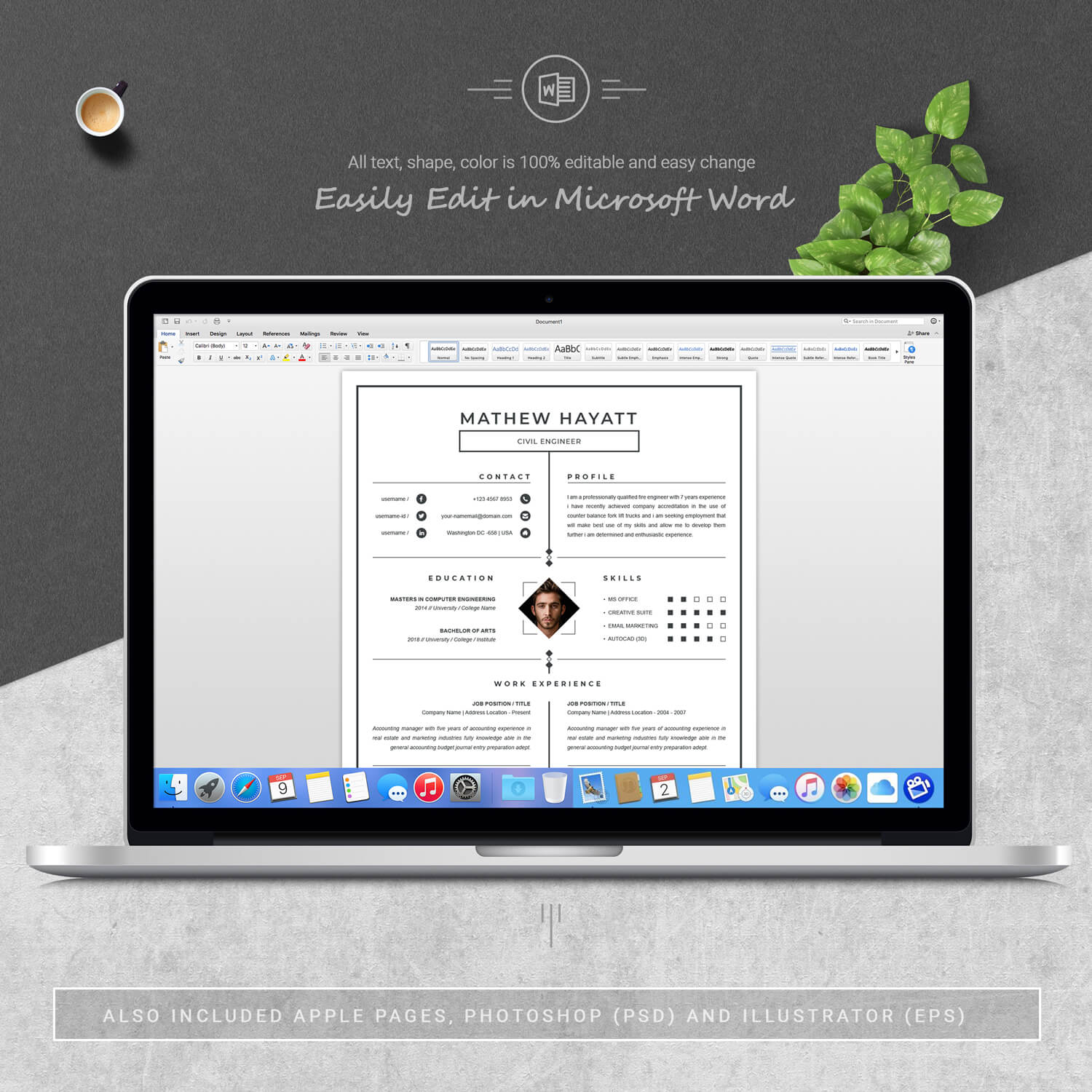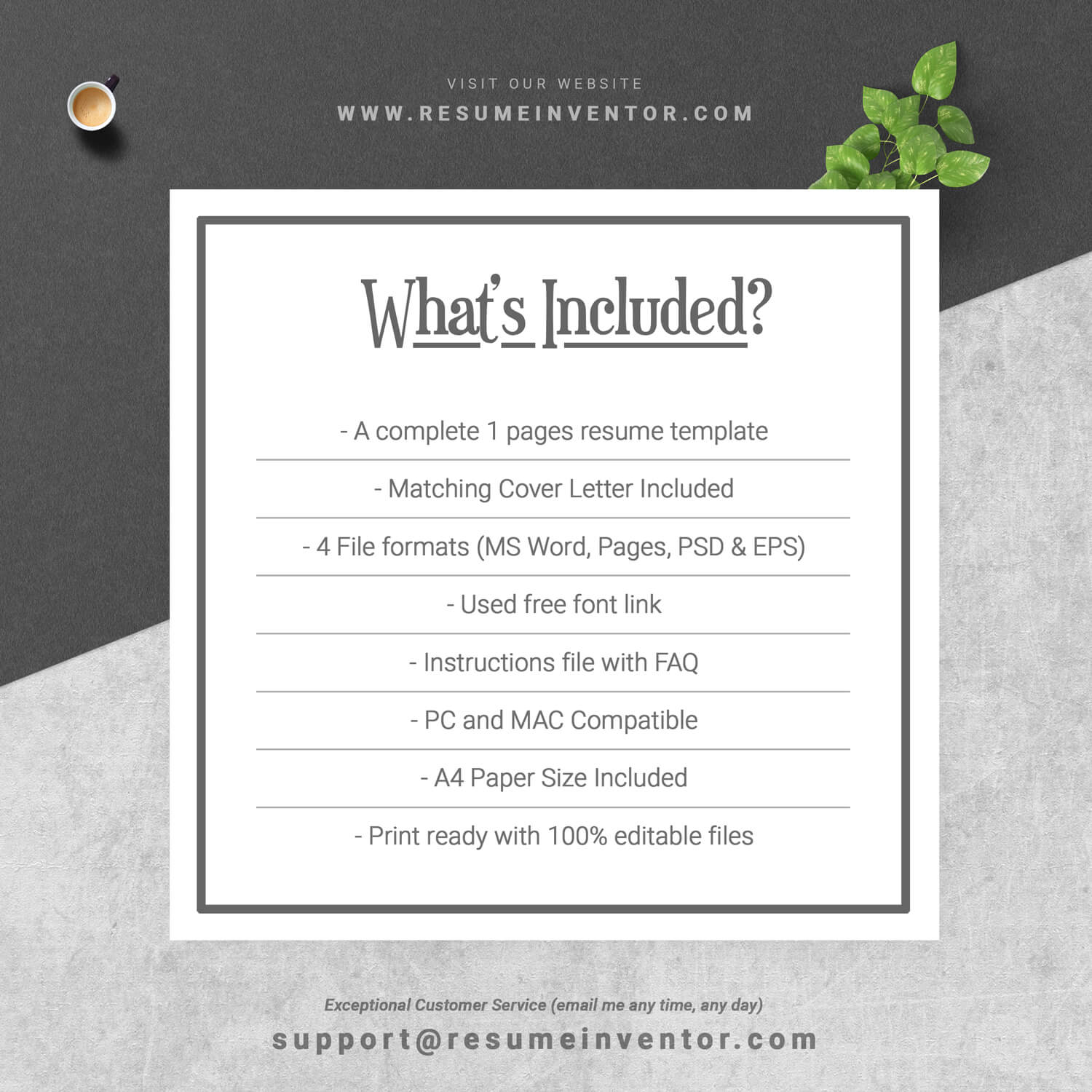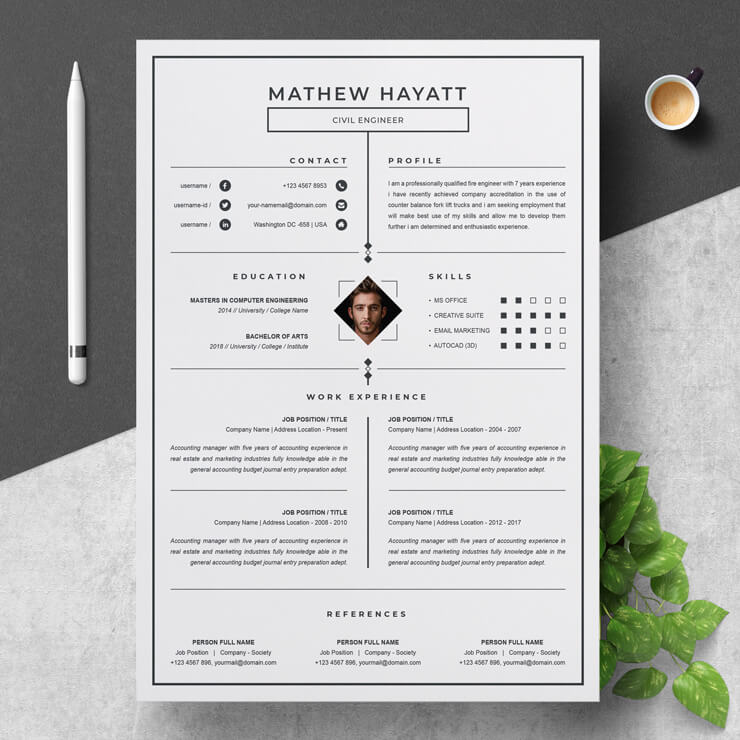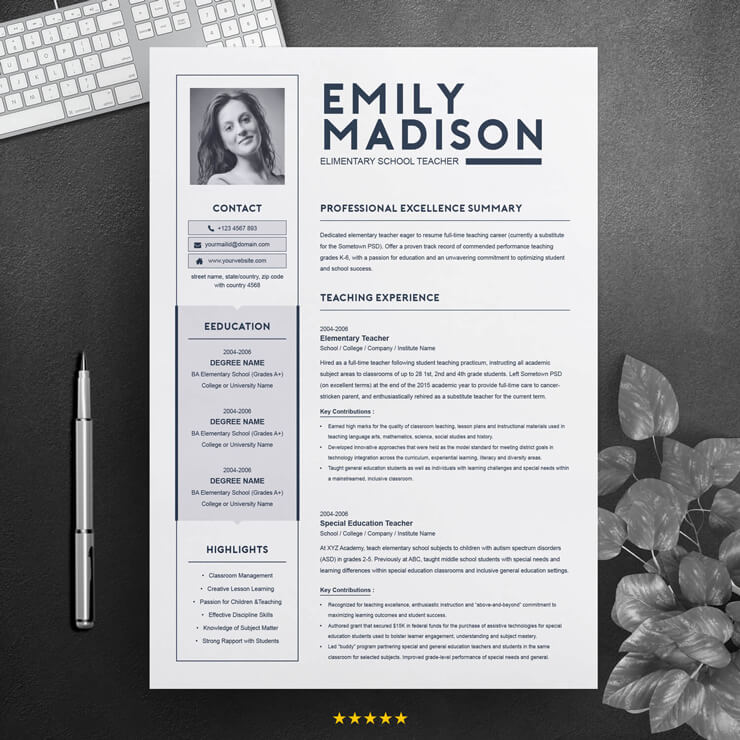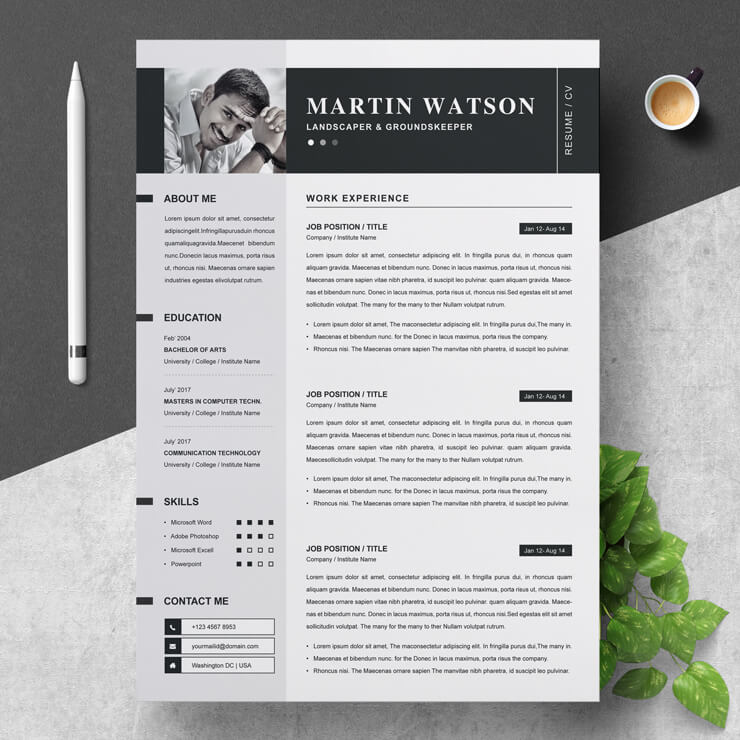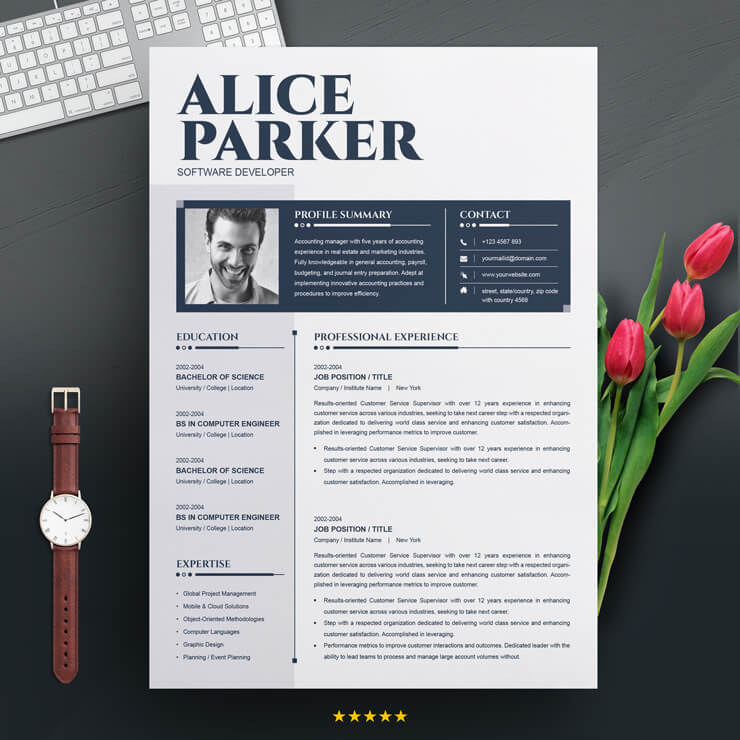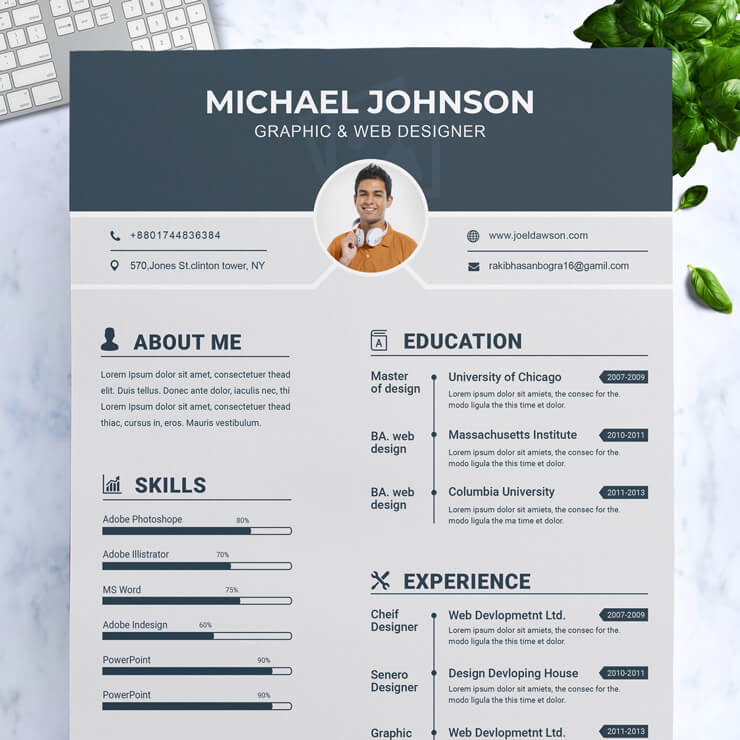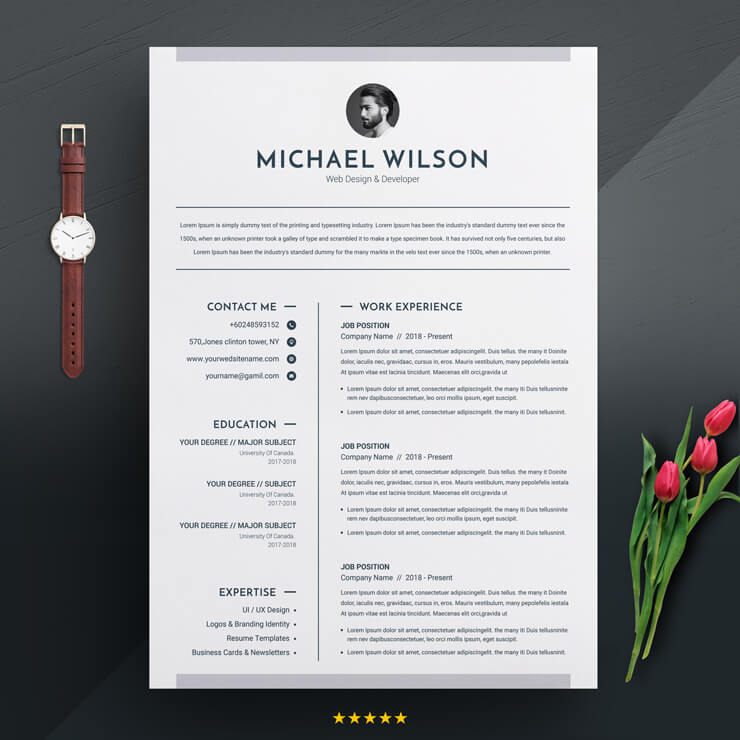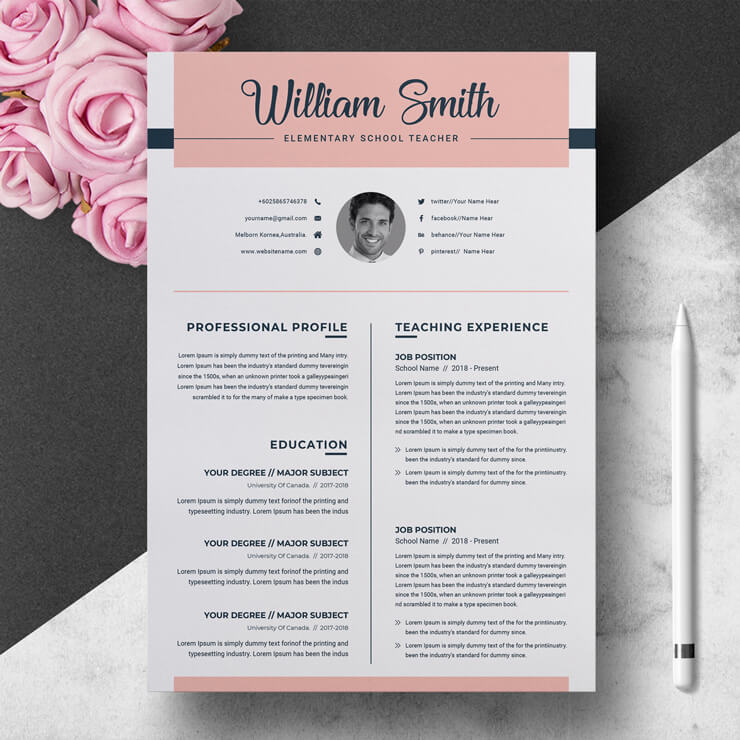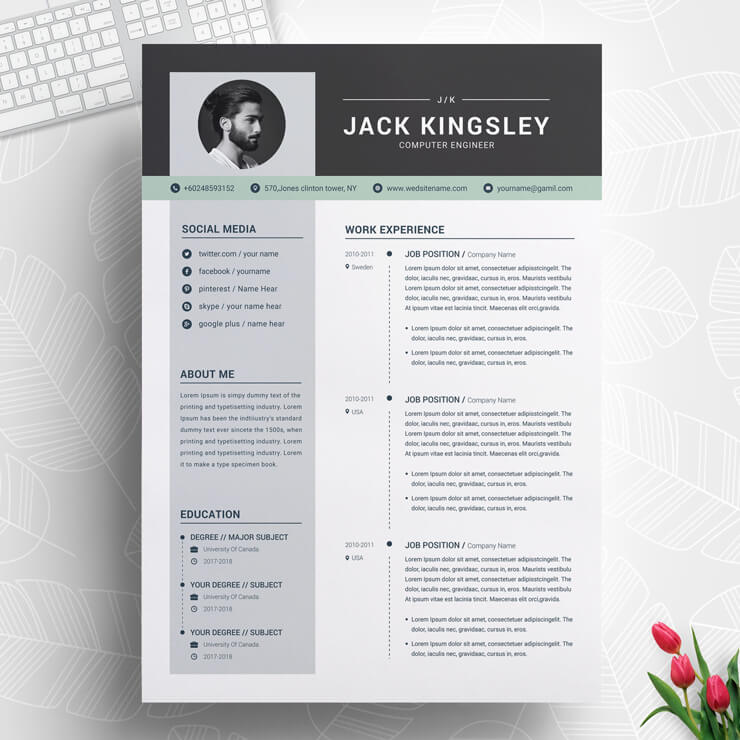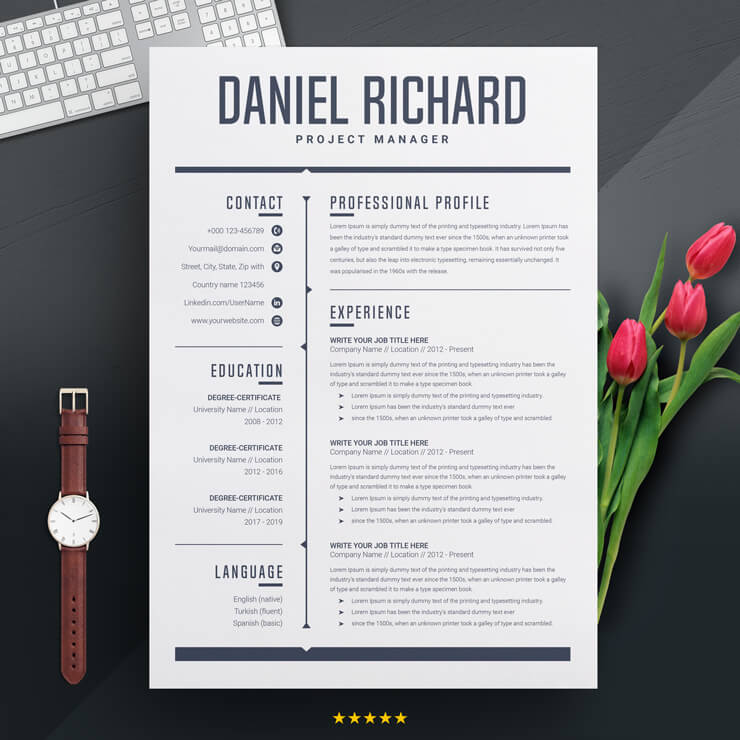Civil Engineer Resume Template
In today’s competitive job market, a Civil Engineer Resume is your ticket to success. Standing out in a pool of skilled professionals requires a resume that showcases your expertise and achievements in civil engineering. Many skilled civil engineers face this challenge, often due to a resume that doesn’t quite hit the mark. The problem is they can not create an optimized resume. Hiring managers are searching for specific information, but if your resume is cluttered with irrelevant details. The hiring manager will reject your resume. Imagine a resume that showcases your expertise in civil engineering, structured to catch the eye of industry recruiters. That’s what you need – a civil engineer resume that highlights your strengths and aligns with what hiring managers are seeking.
We have a team of professionals who specialize in crafting the perfect civil engineer resumes. Our templates aren’t just generic templates; these are thoughtfully designed to highlight your unique skills and experiences most effectively. Our civil engineer resume templates are not only easy to customize to fit your profile, but they also exude professionalism and attention to detail. With our help, your resume will stand out in the competitive job market, increasing your chances of landing that coveted interview. Don’t let your talents go unnoticed.
What Is a Civil Engineer?
Civil engineers, the unsung heroes of construction and infrastructure, wield their expertise to plan, design, build, and maintain various public works such as roads, bridges, airports, dams, sewage systems, pipelines, and more. Operating in both public and private sectors, they oversee projects of diverse scales, from local to global. They use their scientific know-how and engineering prowess to enhance our daily surroundings and ensure a better world.
What Does Civil Engineer Do?
Civil engineers are involved in the construction and maintenance of vital infrastructure, with their responsibilities ranging from planning and design to project oversight and implementation. Here are some key responsibilities and aspects of the work carried out by civil engineers:
- Planning and maintaining infrastructure projects
- Designing and constructing highways, railroads, and airports
- Specializing in areas such as stormwater management, road construction, seismic retrofitting, airports, or railroads
- Balancing multiple and conflicting objectives, such as cost feasibility and safety concerns
- Providing leadership and guidance to a team of professionals involved in project implementation
- Utilizing advanced mathematics skills for analysis, design, and troubleshooting
- Ensuring the compliance of infrastructure projects with established standards
Choose the Best Resume Format for Civil Engineer
For civil engineers, choosing the right resume format is key. If you’ve got a strong work history, go with a reverse-chronological resume. It shows off your career progression and stable job record. New grads or those with less work experience might prefer a functional resume, focusing on skills and education over job history. And if you’re somewhere in between, consider a hybrid resume. It mixes both styles, balancing work history with skills and education. Remember, if you’re light on work experience, highlight academic projects or coursework relevant to civil engineering. Whichever format you pick, make sure it’s tailored to the job you’re aiming for. Now, our experts will guide you in creating a resume.
Start With Contact Information
Start your resume with your full name in bold, followed by your job title, like “Civil Engineer,” right below it. Then, list your key contact details: phone number and email address. For a clean look, consider bolding headers such as “Phone,” “Email,” and “LinkedIn” to make them stand out. This simple, organized approach makes your contact information easy to find and professional in appearance, perfect for catching the eye of potential employers.
Example:
- John Doe
- Civil Engineer
- Phone: (555) 123-4567
- Email: johndoe@email.com
- LinkedIn: linkedin.com/in/johndoe
Write a Civil Engineer Resume Summary
Begin with a brief introduction that captures who you are as a professional. Express your enthusiasm for contributing to the company’s goals. Highlight a particular project or achievement that illustrates your capabilities and influence. Emphasize measurable outcomes to demonstrate the concrete results of your work. Explain any innovative or unique approaches you used to meet your goals. Wrap up by describing how your efforts brought real-world advantages to the project or the company. Ensure that your structure is straightforward and to the point, with each sentence providing meaningful information. Don’t write in this section over 5 sentences.
Example:
With over 8 years in urban infrastructure, I aim to bring my expertise in cost reduction and sustainability to XYZ Corporation. My notable achievement includes slashing Riverside Bridge’s costs by 20% through innovative material use and data analysis, enhancing efficiency, and setting new industry standards. I’m excited to drive similar creative successes at XYZ Corporation.
Describe Your Civil Engineer Work Experience
When detailing your work experience, prioritize clarity and organization. Achieve this by presenting key responsibilities and accomplishments through concise, one-sentence bullet points. This approach enhances readability and highlights the most important aspects of your previous roles. Keep in mind that brevity fosters a more impactful and engaging resume. Utilizing succinct sentences can effectively convey your professional experience to potential employers.
Example:
Chief Civil Engineer, Greenway Infrastructure Solutions, New York, NY
July 2020 – 2022
- Oversee the development of a major urban redevelopment project, including three high-rise buildings and a public park, with a budget exceeding $15 million.
- Conduct structural and environmental impact assessments using advanced software like STAAD.Pro and Envi-Met, ensuring designs meet both efficiency and sustainability standards.
- Led and mentored a diverse team of 25 professionals, including civil engineers, environmental planners, and surveyors; acted as the primary liaison with key project stakeholders and managed relationships with over 40 contractors.
- Successfully navigates complex zoning and environmental regulations, securing all necessary permits for urban development projects in a timely manner.
Write Your Education Background
Highlighting your educational journey is key when putting together your civil engineering resume. Make sure to include information about the schools you attended, the degree you pursued, and your graduation date – it all adds up to showcase your academic background effectively.
Example:
Bachelor of Science in Civil Engineering, Concentration in Structural Engineering
Texas Tech University, Lubbock, TX, August 2017 – May 2021
Add Skills to Your Resume
In the skills segment of your resume, emphasize your technical expertise, understanding of problem-solving, and proficiency in industry-specific tools and software pertinent to the civil engineering position you’re seeking. Tailor this section by closely matching your skills with the specifications mentioned in the job description. Take note of the employer’s preferences and include a mix of technical and interpersonal skills, demonstrating your ability to collaborate seamlessly and navigate complex engineering projects with precision.
Examples:
- Proficiency in AutoCAD, Civil 3D, and Microsoft Project
- Strong understanding of geotechnical engineering and hydraulic systems
- Excellent problem-solving abilities
- Effective communication skills
- Exceptional leadership qualities
- Detail-oriented
- Strong analytical abilities
You Can Add an Extra Section to Your Resume
If proficient in multiple languages and adorned with awards and certifications, seamlessly integrate these valuable assets into your resume.
Example:
Languages
- English: Fluent
- French: Advanced
Certifications
- Professional Engineer (PE), National Society of Professional Engineers, 2021.
Awards
- 2022: Innovative Project Leader, National Civil Engineering Society.
Following these comprehensive guidelines will help you craft a standout civil engineer resume that effectively showcases your skills, experience, and achievements, ensuring you make a strong impression on potential employers.
Tips for Making a Cover Letter for the Civil Engineer
Crafting an effective cover letter is pivotal for a civil engineer’s job application, offering an opportunity to present a more comprehensive view of oneself compared to a resume. It serves as a platform to express enthusiasm, detail unique qualifications, and exhibit communication skills. Now, our expert will give you tips for writing a cover letter.
- Tailor for Each Job: Customize your cover letter for each application, emphasizing how your specific skills align with the job requirements.
- Start with Impact: Capture the reader’s attention with a compelling opening. Clearly state the job you’re applying for and mention how you learned about it.
- Highlight Relevant Skills: Emphasize key skills and experiences that make you an ideal candidate, using tangible examples from past projects.
- Spotlight Key Projects: Discuss significant projects you’ve undertaken, especially those relevant to the position, and outline how you tackled unique challenges.
- Demonstrate Industry Knowledge: Showcase your awareness of current trends and technologies in civil engineering, underscoring your commitment to staying informed.
- Address Gaps or Transitions: If applicable, briefly explain any employment gaps or career transitions in a positive light.
- Conciseness is Key: Keep the cover letter concise, ensuring it doesn’t exceed one page. Every sentence should contribute value.
- End with a Call to Action: Conclude the letter by expressing eagerness to discuss your potential contributions further in an interview.
- Maintain a Professional Tone: Sustain a professional tone throughout the letter, avoiding overly casual language.
- Thorough Proofreading: Prioritize a meticulous proofreading process to eliminate spelling or grammatical errors that might create a negative impression.
Create a Civil Engineer Resume Without Hassle
Creating a civil engineer resume can often be a time-consuming and complex task, requiring careful consideration of content, format, and presentation. If you’re looking to build your resume quickly and without hassle, consider using our pre-designed resume template. Our resume is expertly crafted to look professional and is easily customizable to fit your specific career journey and skills. It’s optimized to highlight the key elements that employers look for in a civil engineer, ensuring your qualifications stand out. Don’t spend hours struggling with formatting and content organization. Choose our resume template for a stress-free, efficient way to create your standout resume. Take the first step towards your next great opportunity, and check out our resume today!
Share Now!
